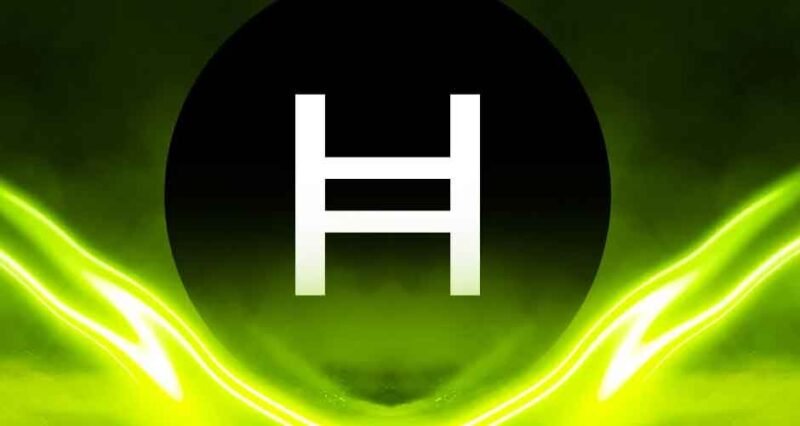
Ethereum is the “next best thing” in the crypto world after Bitcoin. It’s long been the most valuable and reputable altcoin, although many projects aim to take that throne. Hedera is compatible with the Ethereum Virtual Machine, and its HBAR token uses the ERC-20 standard.
The platforms come with various differences but also important similarities. These common features will be the topic of this post, so before deciding on the HBAR vs ETH showdown winner, here are the similarities of these platforms!
Decentralization
Decentralization is among the key features of blockchain platforms, and one of the main reasons why the crypto industry is so attractive to investors worldwide. The term refers to the lack of existence of a central authority in the network.
That’s a positive thing since all information, control, and functions are distributed throughout the network. In other words, users don’t have to trust the central authority regarding network development and functionality. Instead, everything is transparent, and the community decides on how the platform will evolve.
Smart Contracts
Smart contracts are at the core of both Hedera and Ethereum functionality. These are contracts in a digital form, which are recorded as a program on the chosen blockchain. Each contract has a specific condition set that you pre-determine. Once those terms are met, a smart contract is automatically executed, which eliminates the need for an intermediary.
The biggest advantage of smart contracts is that there’s no forgery or code alteration. Once the code is on the chain, there’s no way to fix it, and the contract execution is automatic. It’s also accurate because a computer can precisely determine when the conditions for the execution are met.
Developer Communities
Both platforms have active development communities, starting with the Governance Council that gathers reputable companies like Google, LG, and IBM. You can find numerous developer resources on the official website. They range from the learning center to tools, integrations, and documentation, as well as grant programs that could speed up the project. The most common apps on Hedera include games, web3 enterprise apps, DeFi, and other dApps. Some top Hedera apps include Sportbet.one, SaucerSwap, NFTier, and HashGuild.
Ethereum proudly states that its community includes hundreds of thousands of users. There are also developers, designers, and technologists who can discuss and connect to share similar ideas or exchange different points of view.
You can check events like meet-ups, hackathons, and conferences related to Ethereum, search for grants, and get involved with a project that fits your skills. Ethereum has thousands of apps available, with the most notable ones including Uniswap v3, 1inch Network, OpenSea, and Stargate.
Tokenization
Learning more about the token’s specifics is imperative for each trade, whether you plan to convert BTC to TFUEL or Hedera to Ethereum. HBAR is currently worth approximately $0.053, while the project’s market cap is over $1.70 billion.
The token didn’t kick off until 2020, and that’s when it was at an all-time low ($0.01001). Its value increased 426% from then but also declined 90% compared to the all-time high in 2021. HBAR was worth $0.5701 during the crypto boom, and after the major decline, it’s now showing signs of recovery.
The maximum HBAR supply is 50 billion coins. Out of that, over 32 billion tokens (or 65%) are currently in circulation. The official website shows that the two founders have two billion coins each, and senior executives have from 250 to 300 million HBAR tokens. Hedera regularly informs the public when new tokens become available.
ETH is trading at $1,835, and the project market cap stands at around $220 billion. Ethereum’s all-time low was recorded eight years ago, and it’s not relevant for today’s token value. During the crypto boom, the token was worth $4.891.70. It’s important because this shows that ETH only lost around 61.8% of its value compared to the all-time high, and most other cryptos suffer bigger blows.
You can currently find 120,178,495 ETH tokens in circulation, and while that’s the total supply, the maximum isn’t limited. The developers explain this with the desire to optimize network security by keeping the issuance minimal.
HBAR vs ETH: Do They Have a Similar Future as Well?
Ethereum developers work hard to improve the network. The latest Shanghai upgrade made in April 2023 is a hard fork that enables the network to process withdrawal requests for tokens placed on the Beacon Chain launched in 2020.
Hedera also improves its network with mainnet and testnet updates occurring monthly. It’s why we are inclined to believe that both networks are here to stay. Some say it’s a question of time when an Ethereum “killer” will appear, but they’ve been keeping competitors off successfully for years. Ultimately, both HDAR and ETH seem worth your investment, so it’s up to you to decide.


